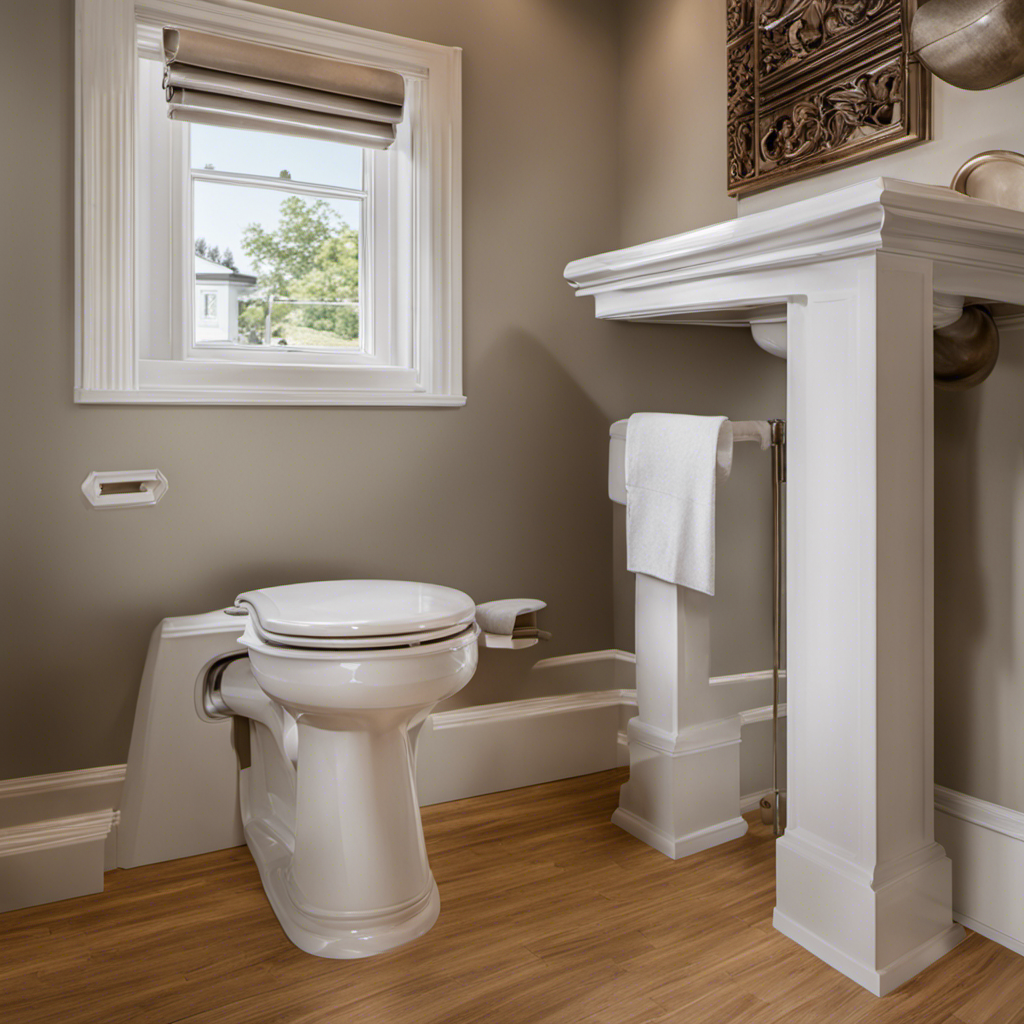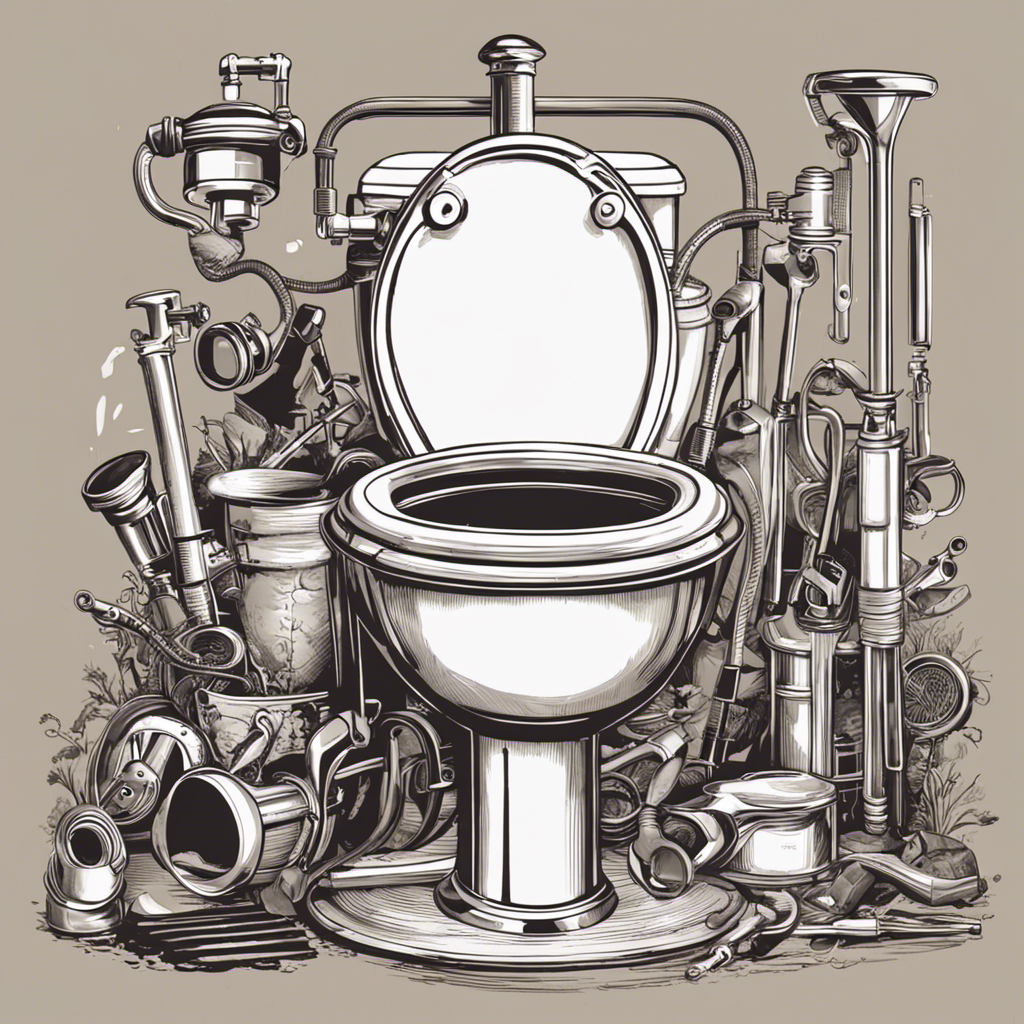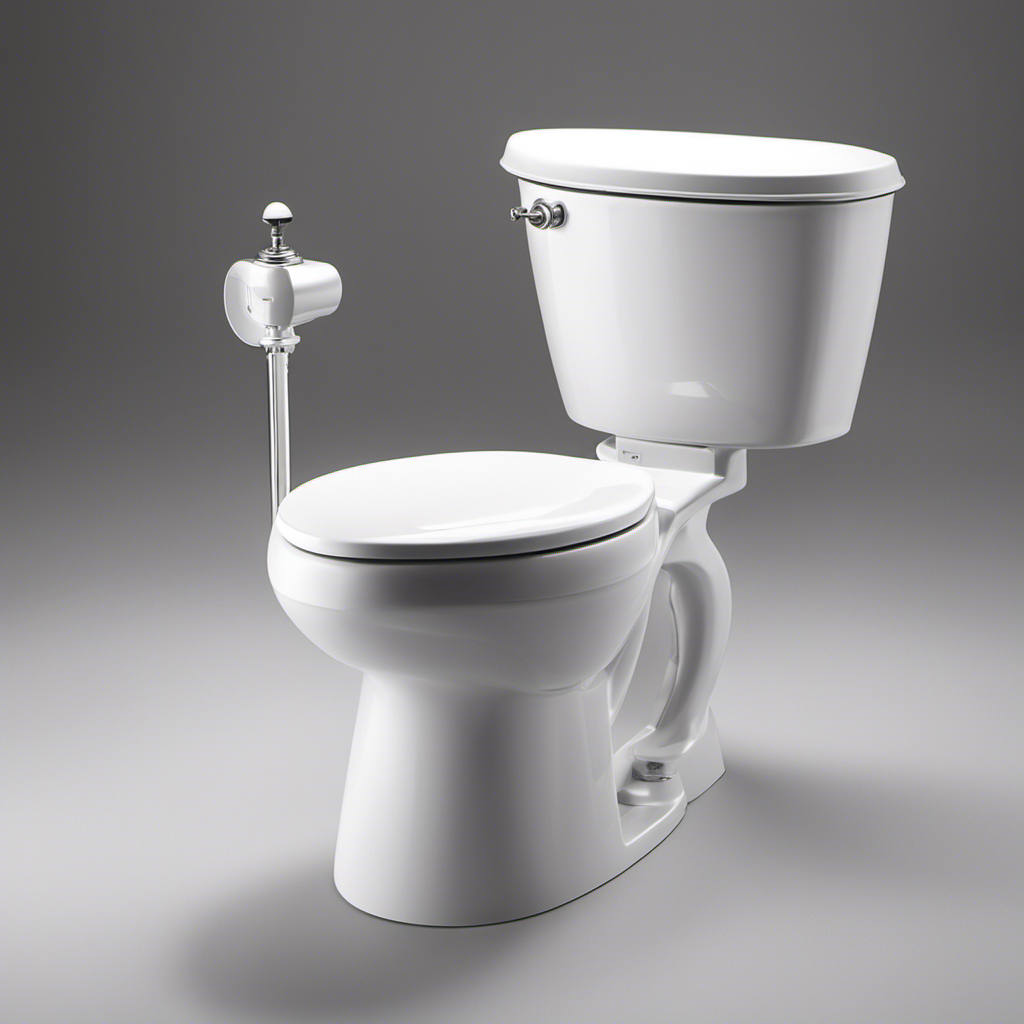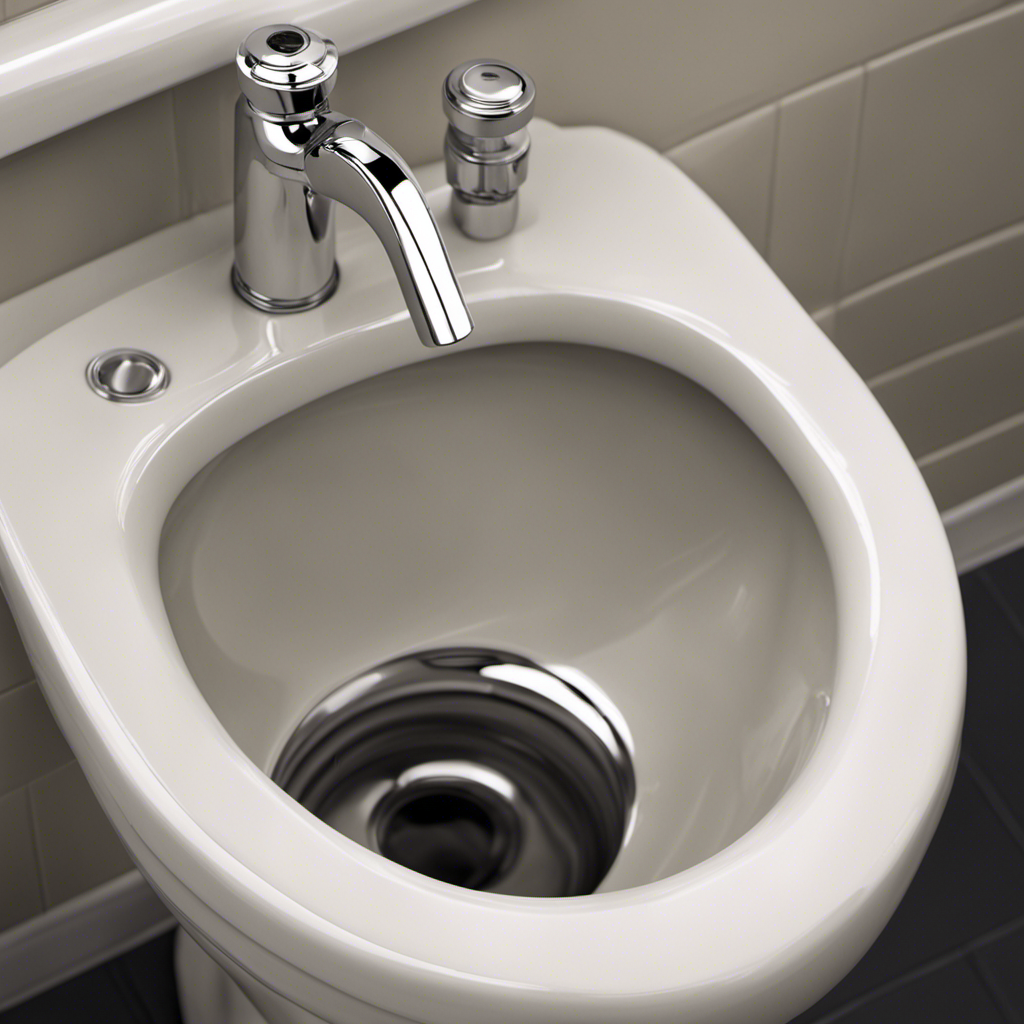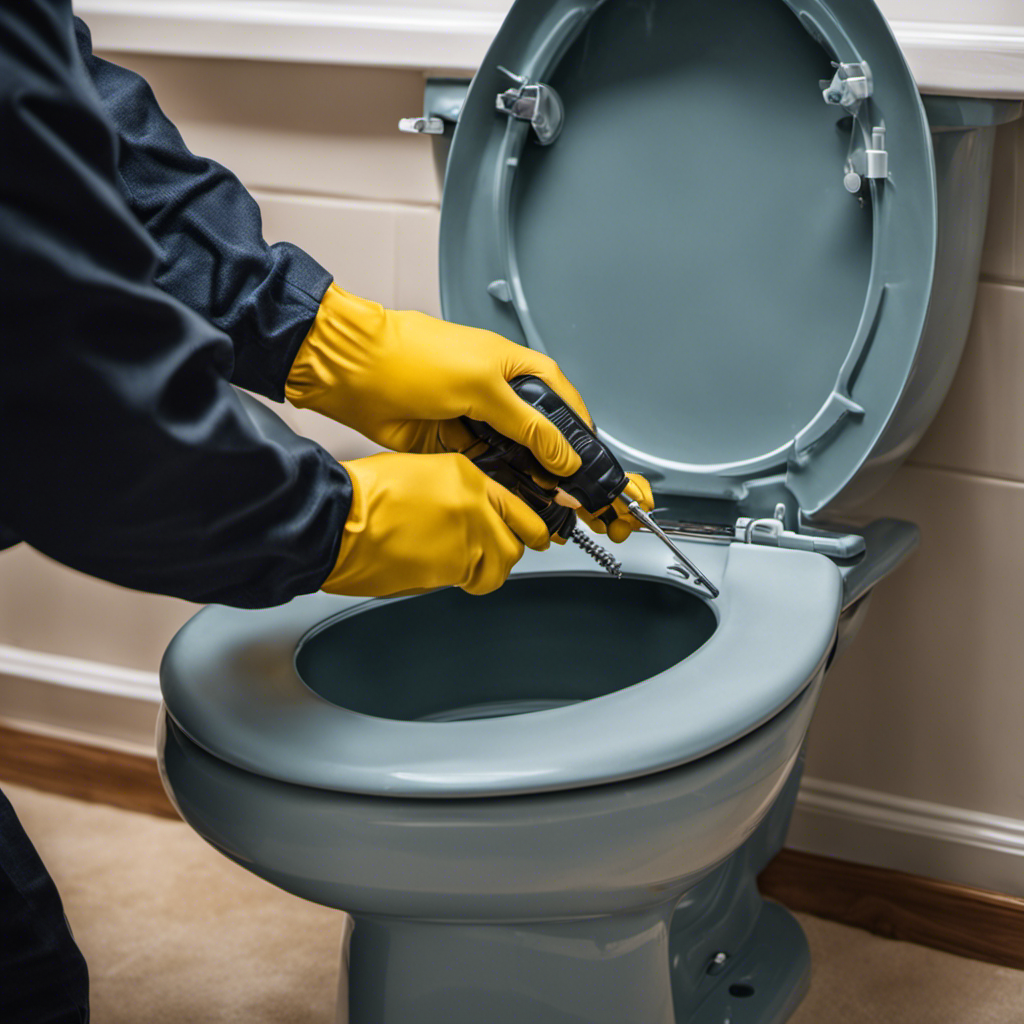I’ve always found it fascinating how something as seemingly insignificant as a toilet vent can have such a significant impact on our plumbing systems. These unassuming little vents play a vital role in maintaining the functionality and comfort of our homes.
They ensure that sewage odors stay out, drainage remains smooth, and air pressure within the plumbing system stays balanced. Without properly installed vents, we’d be left with gurgling sounds, sluggish drainage, and unpleasant odors.
So, let’s delve into the world of toilet vents and explore why they’re so crucial for a well-maintained plumbing system.
Key Takeaways
- Toilet vents are essential for keeping sewage odors out of your home and ensuring smooth drainage.
- Signs of malfunctioning toilet vents include gurgling sounds when flushing, sluggish drainage with fixtures, and unpleasant odors.
- Properly installed toilet vents allow air to enter drains, maintain air pressure balance, and prevent sewage fumes from entering rooms.
- There are different types of toilet vents, including true vents, auxiliary vents, common vents, AAV (Air Admittance Valves), and wet vents.
The Role of Toilet Vents in Preventing Sewage Odors
Toilet vents are essential in keeping sewage odors out of my home and ensuring a pleasant living environment. Proper toilet vent installation is crucial to prevent common venting issues that can lead to unpleasant odors and compromised drainage systems.
When vents are not installed correctly, sewage fumes can enter rooms, causing a foul smell and an uncomfortable living space. Gurgling sounds during flushing and sluggish drainage are signs of malfunctioning toilet vents. These issues can be prevented by ensuring that the vents are connected to the main drain or stack properly.
Ventilation systems draw fumes up and out of the roof, alleviating negative pressures and keeping traps sealed. By addressing common venting issues and installing toilet vents correctly, homeowners can enjoy a sewage odor-free home and a well-functioning plumbing system.
Ensuring Smooth Drainage With Proper Plumbing Ventilation
When everything is functioning properly, my plumbing ventilation system ensures smooth drainage and prevents any issues with sluggish flow or clogged drains. However, common issues with plumbing ventilation can arise, causing disruptions in the overall plumbing system.
One of the most significant impacts of inadequate plumbing ventilation is the risk of negative pressures, which can lead to the loss of water seals in traps and the release of foul odors into living spaces. To fix these issues, it is essential to identify and address any obstructions or blockages in the vent pipes.
Clearing debris or repairing damaged vent caps and covers can restore proper airflow and alleviate the negative pressure. By maintaining and troubleshooting my plumbing ventilation system, I can avoid the inconvenience and potential damage caused by inadequate ventilation.
Understanding P-Traps: Catching Debris, Solids, and Odors
P-traps play a crucial role in maintaining the cleanliness and functionality of my plumbing system by catching debris, solids, and odors. Here are four important points about P-trap maintenance and troubleshooting toilet vent issues:
-
Regular cleaning: P-traps should be cleaned periodically to prevent clogs and foul odors. Simply remove the trap and clean it thoroughly before reattaching it.
-
Proper installation: Ensure that the P-trap is installed correctly to prevent leaks or air gaps. Make sure it is tightly connected to the drain pipe and the outlet pipe.
-
Check for blockages: If you notice slow drainage or gurgling sounds when flushing, there may be a blockage in the P-trap or the vent pipe. Use a plumber’s snake or a plunger to clear any obstructions.
-
Vent pipe inspection: Check the vent pipe for any cracks or damage that could cause ventilation issues. Ensure that the vent pipe extends above the roofline to prevent sewer gas from entering your home.
Maintaining Clear Vents: Importance of Vent Caps and Covers
I always make sure to install vent caps and covers to keep my vents clear and functioning properly. Regular maintenance of these components is crucial for the overall efficiency of the plumbing ventilation system.
Neglecting this aspect can lead to common problems such as clogging, blockage, and the invasion of pests or debris. Vent caps and covers play a vital role in preventing these issues by acting as a barrier against external elements. They shield the vents from rain, snow, leaves, and small animals, ensuring that the airflow remains unobstructed.
However, it is important to note that vent caps and covers require regular inspection and cleaning to maintain their effectiveness. Over time, they can accumulate dirt and debris, reducing their efficiency. By conducting routine maintenance, including cleaning or replacing vent caps and covers if necessary, you can ensure that your plumbing ventilation system operates smoothly, preventing potential problems in the future.
Peace of Mind for Homeowners: Benefits of Well-Installed Vents
Well-installed vents provide homeowners with peace of mind by effectively preventing common plumbing issues and ensuring the smooth operation of the drainage system. Here are the key benefits of professional installation and the importance of regular vent maintenance:
-
Preventing Clogs: Well-installed vents allow proper airflow, preventing clogs that can lead to sluggish drainage and costly repairs.
-
Eliminating Odors: Proper ventilation keeps sewage odors from infiltrating your home, creating a more pleasant living environment.
-
Protecting Fixtures: Regular vent maintenance ensures that fixtures, such as toilets, sinks, and showers, function properly and last longer.
-
Avoiding Costly Repairs: By investing in professional installation and regular maintenance, homeowners can avoid costly repairs caused by ventilation issues.
Signs of Malfunctioning Toilet Vents and How to Prevent Them
As a homeowner, it is crucial to be aware of the signs of malfunctioning toilet vents and how to prevent them. Maintaining and troubleshooting toilet vent problems is essential for the proper functioning of your plumbing system.
Signs of malfunctioning vents include awful gurgling sounds when flushing, sluggish drainage with fixtures, and unpleasant odors. These issues can be caused by a lack of ventilation, but they can be prevented with properly installed toilet vents.
To troubleshoot toilet vent problems, regular maintenance is key. This includes checking for any blockages or obstructions in the vent pipes, ensuring that vent caps and covers are in place to keep vents clear, and addressing any ventilation system issues promptly.
Frequently Asked Questions
What Are the Different Materials Used for Toilet Vents?
Toilet vent materials vary, with PVC and metal being common options. PVC is lightweight, cost-effective, and resistant to corrosion. Metal vents, such as galvanized steel or copper, offer durability and a sleek aesthetic. Both materials effectively aid in proper plumbing ventilation.
Can Toilet Vents Be Installed in Any Part of the House?
Toilet vents can be installed in various parts of the house, depending on the plumbing layout. Proper ventilation alternatives include connecting the vent to the main drain or stack, ensuring smooth flow and preventing clogged drains.
How Often Should Toilet Vents Be Inspected and Maintained?
Toilet vents should be inspected and maintained regularly to prevent blockages and ensure proper ventilation. Signs of blockage include slow drainage, foul odors, and gurgling sounds. Regular toilet vent cleaning is essential for a well-functioning plumbing system.
Are There Any Specific Building Codes or Regulations Regarding Toilet Vent Installation?
Building code requirements for toilet vent installation vary by jurisdiction. Common installation mistakes include improper sizing, inadequate slope, and lack of proper connections. It is important to consult local codes and hire a professional plumber for proper vent installation.
Are There Any Alternative Methods for Preventing Sewage Odors Without Using Toilet Vents?
There aren’t any alternative methods for preventing sewage odors without using toilet vents. Toilet vent materials like PVC pipes and vent caps are essential for proper plumbing ventilation and odor control.
Conclusion
In conclusion, toilet vents are like the unsung heroes of our plumbing systems. They silently work behind the scenes, ensuring that our homes are free from unpleasant odors and our drains flow smoothly.
Like a breath of fresh air, they balance the pressure within our pipes and prevent sewage fumes from invading our living spaces. Just as a well-ventilated room brings a sense of peace and tranquility, well-installed vents provide homeowners with the peace of mind that their plumbing system is functioning properly.
So let’s appreciate the importance of toilet vents and give them the recognition they deserve.
